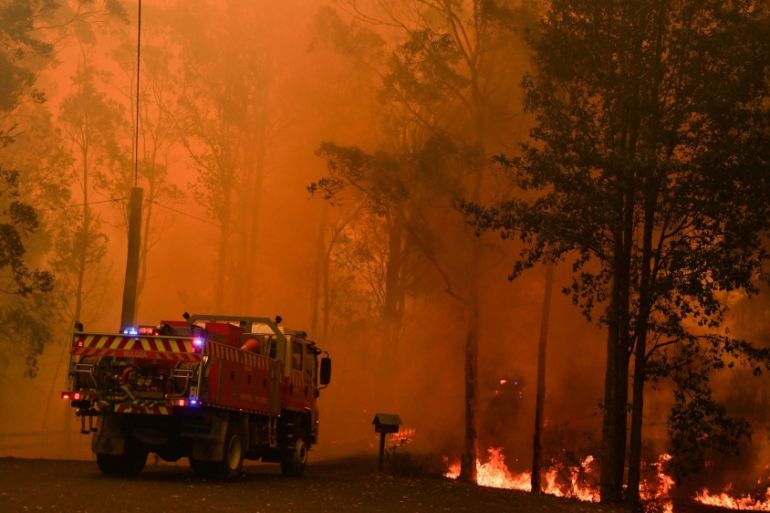Unraveling the Relevance of a Comprehensive BAL Report for Your Home
Ensuring Bush Fire Security Through Correct BAL Report Evaluation
In the world of bush fire protection, the meticulous evaluation of Bushfire Attack Degree (BAL) reports stands as a keystone for protecting residential or commercial properties versus the disastrous impact of wildfires. With ecological elements and residential or commercial property characteristics playing substantial functions in identifying the degree of risk, an extensive understanding of BAL ratings comes to be vital.
Recognizing Bushfire Assault Degree (BAL)
In the world of bushfire security, understanding the Bushfire Strike Degree (BAL) is paramount for guaranteeing efficient reduction approaches. Comprehending the BAL score of a property is essential for home contractors, policymakers, and proprietors to implement suitable actions to guard versus bushfire dangers.

Importance of BAL Report Analysis
An essential aspect in bushfire protection planning entails the comprehensive analysis of BAL records to analyze the possible threats and establish proper reduction methods. BAL reports offer essential information concerning the possible influence of bushfires on a building based upon different elements such as vegetation kind, range to prospective fire risks, and incline of the land. Assessing these records with precision is paramount in creating reliable bushfire security steps tailored to the details danger profile of a property.
Applying Fire Security Steps
Executing effective fire security steps is crucial for guarding homes in bushfire-prone areas. Among the primary methods to enhance fire defense is by creating defensible room around buildings. This entails clearing combustible greenery, such as completely dry leaves and branches, within a particular span of the residential property. Furthermore, installing fireproof roofing materials can aid minimize the threat of cinders firing up the roof covering during a bushfire. Effectively preserved screens and gutters are likewise necessary to protect against particles accumulation that can fuel a fire.
Additionally, having a appropriate and properly maintained water supply, such as a tank or pool, can aid firemans in their initiatives to protect the residential or commercial property. BAL Report. In general, executing a combination of these fire defense measures can considerably increase the opportunities of guarding properties throughout bushfire occasions.
Mitigating Risks in Fire-Prone Locations
To fortify homes versus bushfire hazards, a strategic focus on mitigating risks in fire-prone locations is essential. One essential element of risk mitigation is maintaining defensible space around residential or commercial properties by removing flammable greenery, guaranteeing sufficient spacing between structures and trees, and employing fireproof landscape design methods.
Moreover, building or retrofitting buildings with fire-resistant materials and making certain correct upkeep of roofings, rain gutters, and outside cladding can substantially improve the building's durability to bushfires. Exercising a bushfire and creating emergency plan with all occupants, useful content consisting of emptying procedures and interaction methods, is also vital in mitigating threats successfully. By adopting an aggressive technique to run the risk of mitigation in fire-prone locations, building owners can better shield their possessions and enhance total bushfire readiness.
Ensuring Home Safety and Strength
Guaranteeing the security and strength of residential or commercial properties in fire-prone areas needs an unfaltering dedication to robust precautionary procedures and strategic preparation. Residential or commercial property safety and security begins with carrying out reliable measures to decrease fire dangers.
Strength, on the other hand, includes the capacity of a residential or commercial property to recover and hold up against from a bushfire. This can be boosted via the installment of coal guards on windows and vents, guaranteeing that entrance points for embers are minimized. Additionally, having a well-thought-out emptying plan and practicing it frequently can substantially boost residential property strength. Working together with neighbors and regional fire authorities can likewise bolster the safety and security and strength of buildings in fire-prone locations. By proactively resolving these facets, building proprietors can much better protect their possessions and enjoyed ones from the hazard of bushfires.
Conclusion
In final thought, guaranteeing bushfire defense with correct BAL report evaluation is important for recognizing the level of danger posed by bushfires and carrying out essential fire security actions. By reducing dangers in fire-prone areas and making sure residential or commercial property security and strength, areas and individuals can better plan for and react to bushfire events. It is imperative to prioritize fire precaution to protect lives and home in these risky settings.
In the realm of bush fire security, the careful evaluation of Bushfire Attack Level (BAL) reports stands as a foundation for securing properties against the damaging impact of wildfires (BAL Report). Understanding the click for more info BAL score of a residential property is critical for residential or commercial property contractors, owners, and policymakers to apply ideal actions to guard versus bushfire threats

BAL reports provide important details about the possible effect of bushfires on a building based on numerous factors such as plant life type, distance to possible fire risks, and try this site incline of the land (BAL Report). Overall, carrying out a mix of these fire protection procedures can significantly enhance the opportunities of guarding homes throughout bushfire occasions